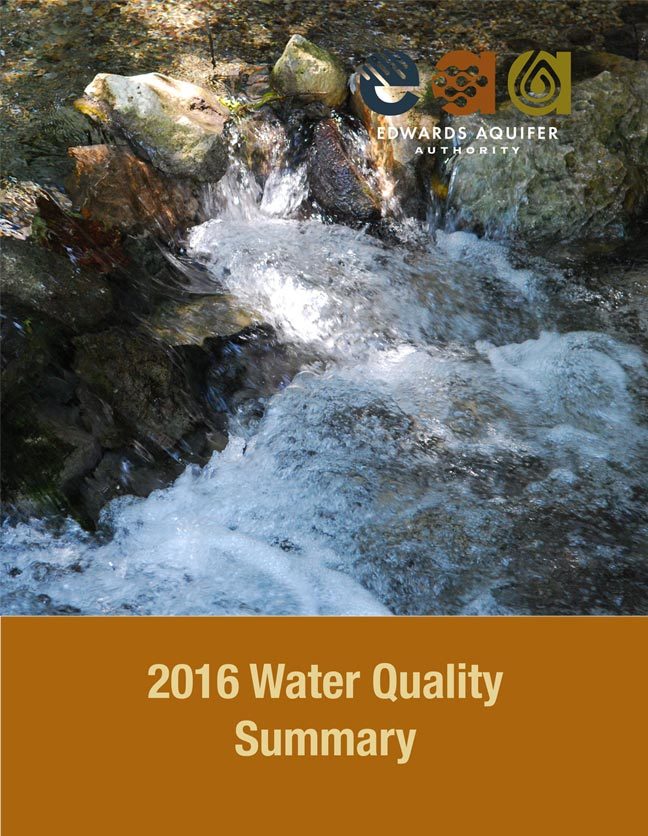EAA 2016 Water Quality Summary

| Summary |
|
The purpose of EAA’s water quality program is to monitor the quality of water in the aquifer by sampling streams, wells, and springs across the region for a variety of parameters. Stream sample locations, upstream of the recharge zone, monitor the quality of water entering the aquifer. Well samples are located throughout the recharge and artesian zones so that the water quality can be monitored within the aquifer. Spring samples monitor the quality of water flowing out of the aquifer. EAA’s sampling program provides a representative “snapshot” of water quality conditions relative to the location, time, and date that the sample was collected. The Edwards Aquifer is a karst groundwater system that was formed by the dissolution of limestone rock by carbonic and sulfuric acid. Dissolution occurs when slightly acidic rainwater dissolves the limestone and creates caves and sinkholes. Sulfuric acid has a deep aquifer source, and dissolution generally occurs along the saline water/freshwater interface. These two processes significantly enhance the permeability of the Edwards Aquifer. The aquifer is characterized by rapid recharge and groundwater velocities in the recharge zone, highly productive wells in the artesian zone, and large springs, e.g., Comal and San Marcos springs. |
Search for Documents
Advance Search
Explore EAA's Scientific Reports
- All Reports
- Water Resources Planning and Management
- Floods and Drought
- Water Quality
- Climatology
- Surface Water / Groundwater Relationship
- Biology
- Springs, Groundwater Discharge
- Archaeology
- RZ Protection
- Aquifer Levels
- Remote Sensing
- Precipitation
- Overview Studies
- Modeling
- Hydrology and Hydrogeology
- History
- Groundwater Recharge, Recharge Zone
- Groundwater Movement
- Geomorphology and Caves
- Weather Modification
- Geology
- Water Use and Conservation
- Geochemistry
